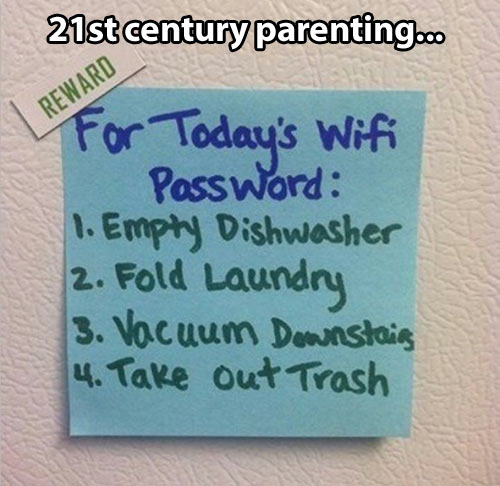The Big Chill
Why American refrigerators are so huge: An Object Lesson.
More


While the usefulness of refrigerators explains their prevalence, it does not explain their size. Most people would agree that fresh food tastes better than anything that's been kept in a refrigerator for even a short amount of time. So why then would anyone want a weeks' worth of perishable food stored in their kitchen at one time? Are Americans slaves to convenience? While our large refrigerators do limit the number of shopping trips we have to take, they also make it possible for us to consume a much greater variety of foods than we ever did without them in our kitchens.
Americans had an early collective desire for cold things. Starting in the early nineteenth century, entrepreneurs cut ice from lakes and streams in New England and elsewhere; then transported it to warmer climes to sell for a profit. While it took the development of mechanical refrigeration later in the century to coin the term, this was the start of the American “natural ice” industry. In order to make such an industry possible, ice merchants had to develop a market, and they succeeded beyond their wildest dreams. Over the course of the nineteenth century, ice went from a luxury to a necessity for the vast majority of Americans and has remained so ever since. In the early twentieth century, the market for ice developed into a market for large refrigerators to keep all the foodstuffs that ice once preserved. Indeed, a refrigerator is called an icebox because before the development of household refrigeration machines during the 1920s the ice delivery man would drop a block in your “refrigerator” and you would have to try to keep the door closed to prevent it from melting too quickly.

As cold chains became longer and more complex, having a big refrigerator became increasingly important for taking advantage of the opportunity that this new infrastructure brought. “Proper refrigeration is today an ever increasing necessity,” wrote the Frigidaire refrigerator company in a cookbook it distributed to housewives in 1929:
The rapid growth of population in cities and urban areas has brought dependence upon distant centers of food supply. Meat, for example, travels a great distance before it finally reaches the home. Fresh fruits, vegetables, poultry, milk, butter, eggs and other food products in very few cases enter the home directly from the farm. It is therefore vitally important, with this complex distribution of food, that every home provides proper refrigeration.
Refrigeration in the middle of the cold chain, however, lagged behind the household variety at its end. A real refrigerated railway car (as opposed to one that depended on ice in any fashion), for example, was not perfected until the 1950s. The refrigerated shipping container – which makes it possible for Americans to buy perishables from other hemispheres, let alone continents – is even more recent than that.
Because the average American family goes grocery shopping once a week, a gigantic refrigerator is required to keep all the perishables they acquire on that trip. Household refrigerators differ greatly from country to country because the characteristics that citizens in different countries want in their refrigerators are reflections of their cultures so at this point in history once weekly shopping trips is an almost uniquely American habit. While Americans and Canadians want storage capacity, European countries are generally more concerned with energy efficiency or the cost of their operation. Since Americans have always had abundant natural resources (like food), a large refrigerator has become closely identified around the world with the American way of life.
While large refrigerators are a recent development, ice and refrigeration have actually played an oversized role in American culture for a very long time. Before refrigerators, American iceboxes kept our food cold, at least as long as nobody opened them too often. “Who ever heard of an American without an icebox?,” wrote the British travel writer Winifred James in 1914. “It is his country’s emblem. It asserts his nationality as conclusively as the Stars and Stripes afloat from his roof-tree, besides being much more useful in keeping his butter cool.” “The Hard Times Refrigerator,” sold by the Boston Scientific Refrigerator in 1877 for people who were facing difficult economic circumstances was nothing but a wooden chest big enough to store fifty pounds of ice.
The drawbacks of using ice as a source of cold for food preservation were numerous. Iceboxes had to be scrubbed out regularly. Since ice melts, iceboxes were dependent upon a steady supply of it being delivered to their kitchens each day. Opening the door to the icebox too often sped up the inevitable melting. Yet even poor families owned iceboxes because the convenience of even far-from-perfect refrigeration made them a household necessity.
The first commercially viable electric refrigerator was the Domelre, a small air-cooled box that customers could place on top of their existing iceboxes. The refrigeration pioneer Fred Wolf invented it in 1913, towards the end of a career building large-scale refrigeration plants for a variety of commercial enterprises. By the 1920s, the practical considerations associated with household refrigeration were mostly resolved. And once the kinks were worked out, everybody wanted a refrigerator of their own. The market for refrigerators even grew during the Great Depression. As a result, mechanical refrigerator sales in the United States grew at a faster pace than anywhere else in the world, saturating the market by the end of World War II. The speed of their adoption was faster than a host of other comparable household technologies, including the clothes washer and the color television.
In today’s global economy, more people around the world aspire to emulate America’s lifestyle and that means an increased demand for refrigeration. In China, it is widely believed that cold drinks are bad for the stomach, yet Chinese refrigerators are still growing in size with the country’s increasing affluence. There is also an enormous potential for the number of refrigerators in China to grow further. As of 2005, only 12 percent of rural Chinese families owned refrigerators. In urban areas that figure was 80 percent. This leaves plenty of room to expand the reach of refrigerators even in China’s developed areas. Industrialized production has made it possible for more Chinese to buy refrigerators. The longest and most efficient cold chains in human history have made it possible for the Chinese to stock ever-larger refrigerators with perishable goods from around the world.

As more and more people around the world are gaining access to refrigerators, now is a good time to consider the importance of this technology beyond its mere presence in our kitchens. Thanks to the efficiencies associated with the modern cold chain, almost every American can now afford to eat foods out of season, or foods of all kinds shipped in from far away. Only needing to go shopping once each week may seem petty in the great scheme of things. After all, what’s another day at the market compared to the fate of the Earth? Luckily, the sustainability vs. convenience dilemma is not an either/or proposition. “Sustainable growth in refrigeration and air conditioning should provide the maximum growth of benefits with the minimization of other impacts,” argues the refrigerating engineer Robert Heap. In other words, society's goal should be to maintain the maximum level of convenience for people, preserving as much food as possible. We can still make a wide variety of perishable food readily available around the world, without forcing consumers to give up too much for the sake of the environment. As household refrigerators are becoming more energy efficient all the time, whatever sacrifices that do need to be made will only decrease over time.
The size of our refrigerators, like the food we keep inside them, tells us something about our culture, our lifestyle and our values. If we better appreciate the importance of refrigerators in both the past and the present, then we can place their few adverse effects in their proper context. While refrigerators require energy, so does producing food in the first place or just driving to the supermarket. If food already travels a great distance to reach our homes, then we are lucky to have lots of space in which to preserve it.


